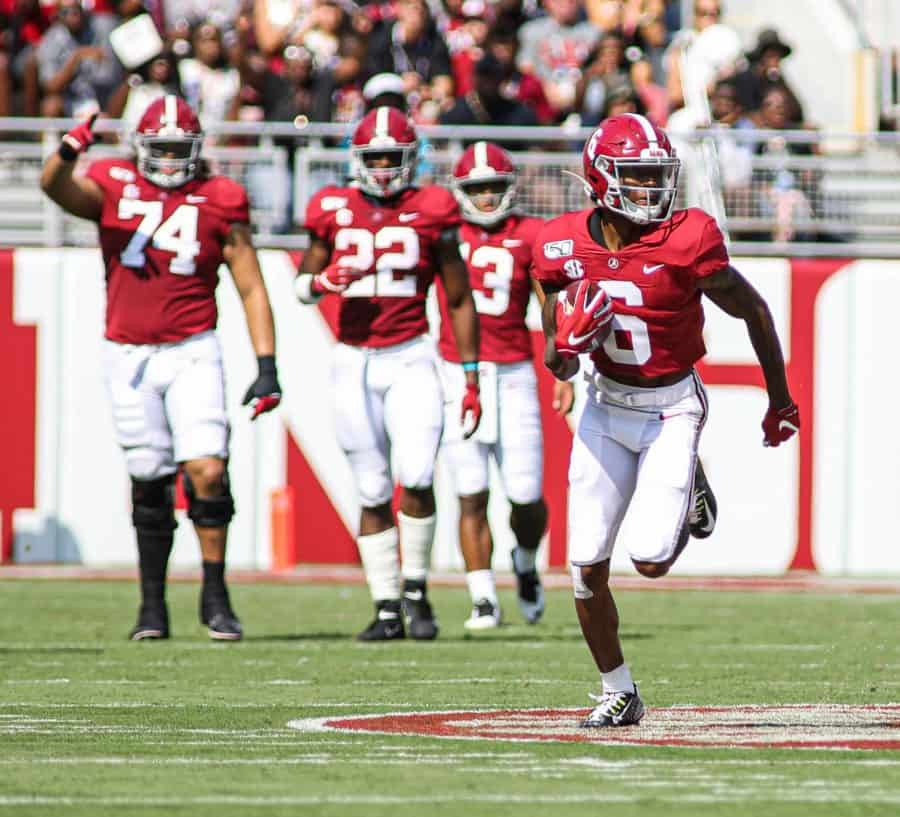Speed kills: How Alabama’s tempo compares to other top offenses
More stories from James Ogletree
“Speed” is one of the buzzwords for Alabama football these days, if not for all of college football.
Forty-yard dashes, time of possession, straight-line speed vs. play speed, no-huddle, tempo – it’s all about speed.
But speed isn’t always a good thing.
The faster an offense scores, the less time the defense has to rest and the more time it spends on the field. Alabama’s defense has played 86 and 88 plays in its last two SEC games, allowing more than 450 yards in each while the offense has set individual and school records.
“Offensively, we’ve been very, very productive, but we need to be able to not only control the tempo of the game with offense, we gotta control the clock and the plays with the offense. If you’re really controlling the game, [the defense playing nearly 90 plays] really shouldn’t happen,” coach Nick Saban said.
But Saban has also repeatedly talked about the offense featuring its best players. The earlier Alabama offenses under Saban had Heisman-worthy running backs, so they bludgeoned teams on the ground.
Now things are different.
“We had All-Americans across the offensive line and me at tight end,” said Michael Williams, who played on the 2009, 2011 and 2012 championship teams. “We didn’t care what it was, it was all pound, pound, play-action. That’s what we were gonna do. … [Now] you have basically four first-rounders playing wide receiver with the No. 1 pick playing quarterback. I mean, who wouldn’t throw the ball?”
The Crimson Tide ranks third in the Football Bowl Subdivision in passing yards per game and second in offensive efficiency. Junior quarterback Tua Tagovailoa has the third-highest passer rating, benefitting from a receiving corps that can take any short pass all the way to the end zone.
Points and yards and accolades abound, but this puts the defense in a tough spot. Still, what coach would instruct his elite playmakers to avoid the end zone?
“If we catch something short and we take it, that’s what they want,” junior receiver DeVonta Smith said. “Nobody wants to just catch the ball and be like, ‘OK, I’m just gonna go down right now.’”
Saban added that it doesn’t benefit the team to scale back one of its strengths to protect another part of the team, so it sounds like the offensive game plan won’t look any different coming out of the team’s first bye week.
However, slight changes to the play calls aren’t out of the question for Florida coach Dan Mullen, who’s known for his offensive innovation.
“If we need to try to put a ball-control drive together, that’ll tweak on how we’re calling things,” Mullen said. “The same way, if we need to try to get the ball back quickly, it might change a little bit and tweak how we call things on the defensive side of the ball.”
Alabama’s offense is one of five in the FBS that scores at least 50 points per game, along with Oklahoma, Ohio State, LSU and Penn State. Upon examining every offensive drive by all five teams, excluding the ends of halves, it becomes clear that Alabama is not unique in its breakneck pace; in fact, it’s the slowest of the five.
Alabama’s average possession over its first five games lasts 2:42 – five seconds longer than Oklahoma’s, nine seconds longer than Ohio State’s, 28 seconds longer than LSU’s and 35 seconds longer than Penn State’s. Those averages can easily be skewed by a few big plays or turnovers, so the averages were also calculated excluding each team’s three shortest drives of each game.
Even then, the Crimson Tide still has the longest average drive of 3:22. Penn State still leads the pack at 2:31, nearly a minute shorter than Alabama. This indicates that Alabama’s offense isn’t in trouble. It has merely evolved into what a modern college football offense has to be to remain competitive.
That may make life more difficult on defenses or test teams’ defensive depth, but that’s what football requires in 2019. It’s an offensive game.
“The guys that have a lot of wear and tear on them, we have to give them a break that series. Hopefully, we can do it that way,” said LSU coach Ed Orgeron, whose Tigers average 58 points per game. “If we need a break, we’re gonna have to run the football and control the clock. But that’s not what we want to do right now.”
So it appears this isn’t a matter of the offense changing to help the defense; it’s more that the defense has to respond to whatever situation the offense puts it in.
In Alabama’s case, the defense doesn’t have it as tough as the other four. Not only does the Crimson Tide have the longest average drive of the five, but it also has the most drives longer than five minutes (eight).
Its last full drive against South Carolina lasted 7:47, the longest drive out of the combined 260 by those five top offenses. It was the epitome of what Saban looks for when he talks about being able to finish games.
A 30-yard pass on third-and-5, a 14-yard pass on third-and-6, a 1-yard touchdown run on fourth-and-goal – all key plays to keep the possession alive. That experience of salting away a win, even a 24-point win, could pay off later, with at least four and as many as six games remaining against teams currently ranked in the top 25.
“You got a team that’s still trying to figure itself out in the run game,” Williams said. “Sometimes that takes seven, eight weeks. But me knowing Coach Saban, I know that’ll get fixed. There’s nothing to worry about. You’re winning games. You may not be winning games the way everybody used to, but you’re winning games, and that’s the whole standard.”



